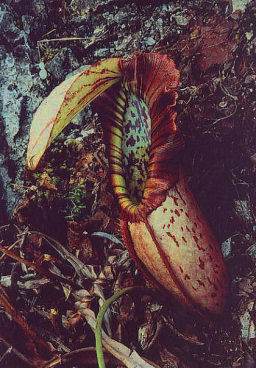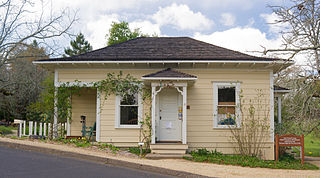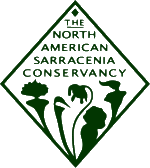
The Humboldt Botanical Garden is a 44.5 acres botanical garden located south of Eureka, California, United States. The Garden is near the South Bay portion of Humboldt Bay on the north side of the College of the Redwoods. Grading and site preparation began in August 2003. Featuring views of Humboldt Bay and the Pacific Ocean, the garden opened in 2006, with more development completed by 2008.

Sonoma Botanical Garden is a 501(c)3 private nonprofit education and research botanical garden, home to one of the largest collections of scientifically documented, wild-source Asian plants in North America and Europe.

The University of California Botanical Garden is a 34-acre botanical garden located on the University of California, Berkeley campus, in Strawberry Canyon. The garden is in the Berkeley Hills, inside the city boundary of Oakland, with views overlooking the San Francisco Bay. It is one of the most diverse plant collections in the United States, and famous for its large number of rare and endangered species.

Drosera adelae, commonly known as the lance-leaved sundew, is a carnivorous plant in the genus Drosera that is endemic to Queensland, Australia.

Adrian Slack was a landscape gardener, plantsman, author and authority on carnivorous plants. He won 5 gold medals at the Chelsea Flower Show, and authored two books: Carnivorous Plants and Insect-Eating Plants and How to Grow Them.

Katherine Olivia Sessions was an American botanist, horticulturalist, and landscape architect closely associated with San Diego, California, and known as the "Mother of Balboa Park."

Nepenthes northiana, or Miss North's pitcher-plant, is a tropical pitcher plant endemic to Borneo, where it grows at elevations ranging from 0 to 500 m above sea level. The specific epithet northiana honours the English botanic illustrator Marianne North, who first depicted the species. Nepenthes northiana is one of the most famous Nepenthes, and its discovery in the latter half of the 19th century contributed to Sarawak's reputation as a land of spectacular exotic plants.

Luther Burbank's Gold Ridge Experiment Farm is the official name of the 3 acres (12,000 m2) that remain of the farm originally purchased in 1885 by famed plant breeder Luther Burbank (1849-1926) in an area of Sebastopol, California, formerly known as the "Gold Ridge District". To these 10 acres (40,000 m2), Burbank added 5 acres (20,000 m2) in 1904 and 3.046 acres (12,330 m2) in 1906 until, in 1923, failing health compelled him to sell 3.046 acres (12,330 m2) of his holdings. Burbank died in 1926.

Arctostaphylos densiflora, known by the common name Vine Hill manzanita, is a very rare species of manzanita. It is endemic to Sonoma County, California, where it is known from only one extant population of 20 to 30 individual plants. These last wild members of the species are on land near Sebastopol which is owned and protected by the California Native Plant Society. In addition, there are five to ten plants of this manzanita taxon growing on private property about a mile away. The local habitat is mostly chaparral on sandy shale soils.
Raymond John Evison is a nurseryman, clematis breeder, lecturer, author and photographer. Born in 1944 he started his horticultural career at the age of 15 in Shropshire and moved to the island of Guernsey to set up The Guernsey Clematis Nursery in 1984.

Drosera slackii is a subtropical sundew native to the Cape Provinces of South Africa. It forms rosettes that range from to two to four inches in diameter, and produces pink flowers. It is named after the British plantsman and author Adrian Slack (1933-2018).

Drosera andersoniana, the sturdy sundew, is an erect perennial tuberous species in the genus Drosera that is endemic to Western Australia. It produces a basal rosette of leaves similar to that of D. peltata and the stem grows to 8–25 cm (3–10 in). Its pink-white to red flowers emerge from August to September. D. andersoniana grows in loamy soils near granite outcrops.

Drosera gigantea, the giant sundew, is an erect perennial tuberous species in the carnivorous plant genus Drosera that is endemic to Western Australia. It grows in sandy soils at the margins of swamps and near granite outcrops along the Western Australian coast from Albany north to just south of Geraldton. D. gigantea produces small shield-shaped leaves along many lateral branches that look like a small tree. Individual plants can grow up to 0.2–1 m (0.7–3.3 ft) tall. Because of its tall, tree-like form, it is considered one of the largest Drosera species. It is also easily cultivated and enjoys damp, humid conditions often provided in greenhouses. White flowers emerge from August to November. The red tubers of this species can grow to be 3.8 cm (1.5 in) in diameter and may be a metre below ground.
Tony Avent is an American horticulturist and plantsman. He and wife and business partner, Anita Avent, own Plant Delights Nursery and Juniper Level Botanic Garden in Raleigh, North Carolina. In addition, he is a plant explorer, author and public speaker.

The Savage Garden: Cultivating Carnivorous Plants is a carnivorous plant cultivation guide by Peter D'Amato, horticulturist and owner of California Carnivores nursery. It was originally published in 1998 by Ten Speed Press, and reprinted in 2004. A revised edition was released in July 2013.

The California Nursery Company was established in Niles, California, and incorporated in 1884 by John Rock, R.D. Fox, and others. The nursery sold fruit trees, nut trees, ornamental shrubs and trees, and roses. It was responsible for introducing new hybrids created by such important West Coast breeders as Luther Burbank and Albert Etter.

The North American Sarracenia Conservancy (NASC) is a 501(c)(3) non-profit organization dedicated to habitat conservation. Founded in 2005, the Conservancy was granted tax-exempt status in January 2009. The main focus of the Conservancy is the conservation and preservation of the natural habitats and genetic diversity of the Sarracenia pitcher plants. Sarracenia is a genus of carnivorous plant that trap prey in tube-shaped, hollow leaves, which in some species hold rain water. Species range from the southeastern United States, up the coastal plain, and into the Great Lakes and Canada. Within their range the plants naturally occur in sphagnum bogs, swamps, fens, and flooded plains.

California Carnivores is a plant nursery in Sebastopol, California in the United States. Specializing in the cultivation of carnivorous plants, CC is home to one of the largest collections of imported carnivorous plants in North America, and possibly the world, with more than 1,000 types of imported plant and dozen of varieties for sale in the retail section of the nursery.

William A. McNamara is an American horticulturist and expert in the field of plant conservation and the flora of Asia. Now retired, he was the President and Executive Director of Quarryhill Botanical Garden, a 25-acre wild woodland garden in Northern California's Sonoma Valley featuring wild-sourced plants from temperate East Asia. In 2017, he and Quarryhill Botanical Garden celebrated their 30th Anniversary. He retired from the Garden in October of 2019.

Herbert R. Schaal is an American landscape architect, educator, and firm leader notable for the broad range and diversity of his projects, including regional studies, national parks, corporate and university campuses, site planning, botanical gardens, downtowns, highways, cemeteries, and public and private gardens. Schaal is one of the first landscape architects to design children's gardens, beginning in the 1990s with Gateway Elementary, Gateway Middle, and Gateway Michael Elementary school grounds in St. Louis, Missouri, the Hershey Children's Garden at the Cleveland Botanical Gardens, and Red Butte Garden and Arboretum.

















